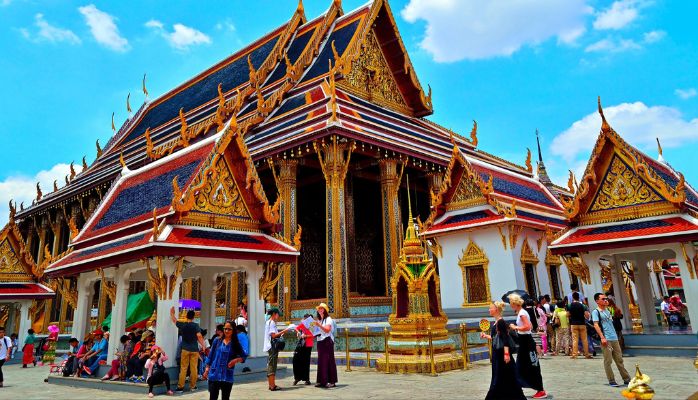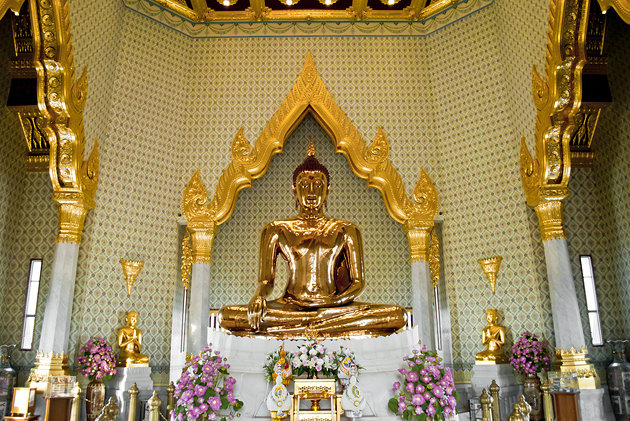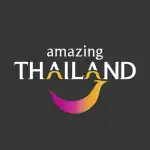Journey with us through the heart of Thailand's capital, Bangkok, as we delve into its rich cultural heritage and explore the most famous temples that have graced this bustling metropolis for centuries. We will take you on a virtual tour of some of Bangkok's most iconic and spiritually significant temples, each with its unique charm and historical significance. From the grandeur of the Grand Palace to the tranquility of Wat Pho and the awe-inspiring Wat Arun, you'll discover the allure of Bangkok's temple treasures that have drawn travelers and pilgrims from around the world.
Most Famous Temples in Bangkok :
1. Wat Phra Kaew (Temple of the Emerald Buddha): Thailand's Spiritual Gem
The Temple of the Emerald Buddha, known as Wat Phra Kaew in Thai, is a sacred and iconic site situated within the magnificent Grand Palace complex in the heart of Bangkok, Thailand. This temple is not only one of the country's most significant religious sites but also a symbol of Thai cultural and artistic excellence.
At its heart, Wat Phra Kaew enshrines the revered Emerald Buddha, a statue meticulously carved from a single block of jade. This 26-inch tall, clothed statue has a history shrouded in mystery and is considered a national treasure. It's the palladium of the Kingdom of Thailand, a symbol of power and a spiritual focal point for the nation.
Visiting Wat Phra Kaew is a journey into the heart of Thailand's spirituality and artistic heritage. The temple, rich in history and symbolism, draws both local devotees and curious travelers seeking to experience the profound sense of reverence and awe that permeates this sacred site. Its serene ambiance, along with the exquisite beauty of its architecture and the spiritual presence of the Emerald Buddha, creates an atmosphere of deep connection and introspection, inviting all who visit to share in the soul of Thailand's cultural and religious traditions.
Dress Code: Shorts and Sleeveless Shirts not allowed.
Timings: 8.30 AM to 3.30 PM
Entry Fee: 500 Baht per person

2. Wat Arun (Temple of Dawn): A Symbol of Thailand's Spiritual Splendor
Wat Arun, often referred to as the Temple of Dawn, is a remarkable and iconic temple that graces the western banks of the Chao Phraya River in Bangkok, Thailand. Its distinctive and ornate architectural design has made it one of the most recognized and revered landmarks in the country. The temple's name, "Wat Arun," pays homage to the Hindu god Aruna, symbolizing the radiance of the rising sun. As the sun's first light kisses the temple's spires at dawn, it creates a breathtaking and ethereal spectacle, lending credence to its name.
Wat Arun's history is intertwined with the Ayutthaya Kingdom, and it underwent significant renovations during the Rattanakosin Kingdom, reflecting both Ayutthaya and Khmer architectural styles.
Visiting Wat Arun allows you to explore its various structures, including the Ordination Hall and the shrine that houses an image of the Buddha. The temple's expansive grounds and its riverside location provide a serene and contemplative atmosphere that invites visitors to embrace the spirituality and cultural richness of Thailand.
Dress Code: trousers or long skirts and tops that cover your shoulders
Timings: 8 AM to 5.30 PM
Entry Fee: 50 Baht per person

3. Wat Pho (Temple of the Reclining Buddha): The Serene Sanctuary of Bangkok
Wat Pho, often referred to as the Temple of the Reclining Buddha, is a sacred and culturally significant landmark nestled within the bustling streets of Bangkok, Thailand. This renowned temple is celebrated for its spiritual significance, artistic beauty, and historical importance. The temple's architecture is a testament to Thailand's rich artistic heritage, adorned with intricate details and vibrant colors. The temple complex also houses numerous chedis, or stupas, which contain the ashes of Thai royalty. The meticulous design and cultural significance of these structures further showcase the temple's historical importance.
Visitors to Wat Pho are invited to explore its serene courtyards, soak in the spiritual ambiance, and appreciate the exquisite artistry that adorns the temple's architecture. The complex's expansive grounds, with shady trees and serene courtyards, provide a peaceful retreat in the heart of Bangkok.
Dress Code: Wear modest clothing that covers your shoulders, arms, and knees
Timings: 8 AM to 5 PM
Entry Fee: 100 Baht per person

4. Wat Saket (Temple of the Golden Mount): Bangkok's Sacred Elevation
Wat Saket, or the Temple of the Golden Mount, stands as an oasis of tranquility in the midst of Bangkok's bustling urban landscape. This sacred temple is perched upon a man-made hill, offering visitors not only a spiritual haven but also stunning panoramic views of the city. The Golden Mount, or Phu Khao Thong, is the temple's most iconic feature. A spiraling staircase takes you to the top, where a gilded chedi (stupa) gleams in the sunlight. The chedi enshrines relics of the Buddha, making it a revered pilgrimage site for Buddhists.
Visiting Wat Saket allows you to explore its historical and cultural significance, including its role as a crematorium during the plague in the 19th century. It's a place where tradition, devotion, and natural beauty converge.
Dress Code: Avoid wearing sleeveless tops, shorts, and short skirts.
Timings: 9 AM to 5 PM
Entry Fee: free

5. Wat Traimit: Unveiling Bangkok's Golden Marvel
Wat Traimit, also known as the Temple of the Golden Buddha, is a revered and historically significant temple located in the heart of Bangkok, Thailand. This temple is particularly renowned for its extraordinary treasure - a solid gold Buddha statue that stands as one of the largest of its kind in the world. Wat Traimit is not only a place of historical significance but also a symbol of Thailand's rich cultural heritage and spiritual devotion. Its serene ambiance and the stunning beauty of the Golden Buddha create an atmosphere of deep reverence and wonder.
Visiting Wat Traimit offers a unique opportunity to witness the Golden Buddha in all its glory and to explore the historical and cultural aspects of the temple. The temple complex also features other intriguing artifacts, traditional Thai architecture, and serene courtyards. The temple serves as a reminder of the artistic and spiritual treasures that Thailand has to offer, inviting all who visit to appreciate its profound history and cultural richness.
Dress Code: Avoid wearing sleeveless tops, shorts, and short skirts.
Timings: 9 AM to 5 PM
Entry Fee: free

Book Bangkok Temples Tour
FAQs
1. Which are the most famous temples to visit in Bangkok?
A. Some of the most famous temples in Bangkok include Wat Phra Kaew (Temple of the Emerald Buddha), Wat Pho (Temple of the Reclining Buddha), Wat Arun (Temple of Dawn), and Wat Traimit (Temple of the Golden Buddha).
2. What is the dress code for visiting temples in Bangkok?
A. Visitors should dress modestly when visiting temples, covering their shoulders, arms, and knees. Avoid sleeveless tops, shorts, and short skirts. Loose-fitting, long pants or a long skirt is recommended. Remove your shoes before entering temple buildings.
3. Is there an entrance fee to visit temples in Bangkok?
A. Some temples have an entrance fee for foreign tourists, while others may charge a small fee for entry into specific areas of the temple grounds. Prices can vary, so it's a good idea to check in advance.
4. What are the opening hours of the temples in Bangkok?
A. Temple opening hours can vary, but many temples are open from early morning until late afternoon. Wat Phra Kaew and Wat Pho are typically open from around 8:30 AM to 6:30 PM.
5. Are there tour guides available at the temples for explanations?
A. Many temples offer guided tours for a fee. Additionally, some temples provide brochures or information boards with details about the temple's history and significance.
6. Can I take photographs inside the temples in Bangkok?
A. Photography is generally allowed in temple courtyards and outdoor areas. However, it's essential to be respectful and not take photos in restricted or sacred areas, and never take photos of people without their permission.
7. Is there a specific etiquette to follow when inside a temple?
A. When inside a temple, it's important to maintain a respectful and quiet demeanor. Visitors should remove their hats, sunglasses, and shoes before entering temple buildings. Refrain from touching religious artifacts and avoid public displays of affection.





